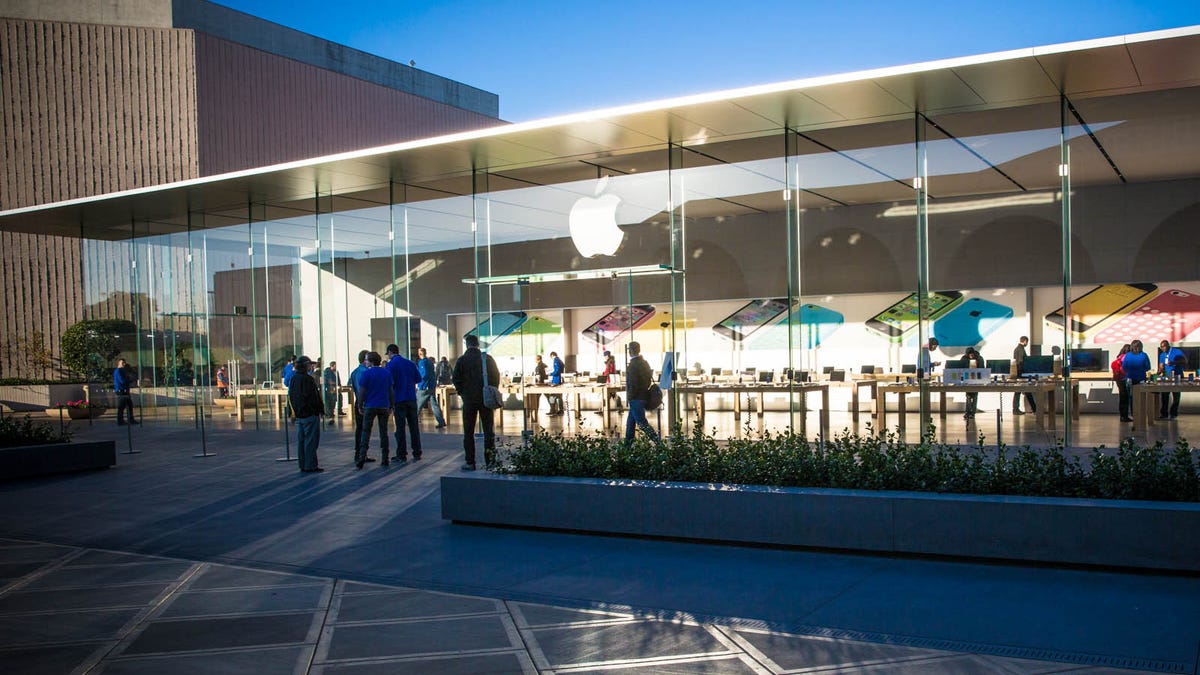Apple rings up record Q1 iPhone sales, but still disappoints Wall Street
The electronics giant's iPhone sales and projections for first-quarter revenue fell short of analysts' estimates, and it reported a slight decline in net income, causing shares to fall in after-hours trading.

Apple on Monday reported record revenue for the fiscal first quarter as it sold more iPhones and iPads than ever. However, the company sold fewer iPhones than Wall Street analysts expected, and it also projected weak revenue for the current period.
"Our objective has always been to make the best and not the most," CEO Tim Cook said during a conference call with analysts. "We feel like we're doing that."
The Cupertino, Calif., electronics giant said it sold a record 51 million iPhones, but analysts had expected 55 million. Apple also sold a record 26 million iPads, better than analysts' estimates for 25 million, and Mac sales of 4.8 million topped the Street view for 4.6 million.
For its next quarter, which runs through March, Apple expects to generate $42 billion to $44 billion in sales, with a gross margin between 37 percent and 38 percent. The revenue is lower than the $46 billion Wall Street expected ahead of the report. Analysts also expected a gross margin of 37.3 percent.
The guidance sent the company's stock down 8.2 percent to $505.59 in after-hours trading.
Chief Financial Officer Peter Oppenheimer blamed four factors for the weaker-than-expected forecast. The biggest reason is channel inventory. Last year, Apple had supply shortages for the iPhone 5 during the entire December quarter and didn't reach a supply/demand balance until the following period. This year, Apple reached that balance much faster, ending its fiscal first quarter with enough iPhones and iPads in stock.The company also was hurt by a stronger US dollar, lower iPod sales (units dropped 52 percent in period), and revenue deferral for giving away software for free. In total, the four factors hurt revenue by about $2 billion, Oppenheimer said.
"The underlying performance of our business is stronger than what the guidance might imply," he said.
Apple's results have been fueled by the
To help better address those new markets, Apple earlier this month started selling the iPhone through China Mobile, the world's biggest wireless carrier. And in September, it introduced two new versions of the iPhone for the first time ever, including the less-expensive but more colorful iPhone 5C. Apple also rolled out the new
Barclays analyst Ben Reitzes cautioned earlier this month that Apple's revenue forecast for the fiscal second quarter could be lower than what analysts expected because of the iPhone 5C's weakness. And other analysts have worried that China Mobile sales could be slow at first, not boosting the second quarter as much as hoped.
Cook said that last week, the first the iPhone was available at China Mobile, was the best week for activations Apple has ever had in China. However, he said the iPhone only works in the 16 cities where China Mobile currently offers 4G. The carrier plans to expand 4G to more than 300 cities by the end of the year, which would help iPhone sales in the country.
As for the iPhone 5C, Cook declined to give any hints about the future of the device. Some reports have suggested Apple will kill off the phone once it releases an iPhone with a bigger screen. Cook acknowledged that more people are buying the iPhone 5S than 5C, largely because of the fingerprint sensor.
"People are really intrigued with Touch ID," Cook said. "I think that, associated with the other things that are unique to the 5S, got the 5S to have a significant amount of attention and a higher mix of sales."
Apple isn't the only company facing a tougher smartphone market. Rival Samsung last week reported its first quarterly operating profit decline in two years. Perhaps most troubling was the slowdown in Samsung's mobile business and a warning that the first half of 2014 would remain weak.
For the first fiscal quarter, Apple reported earnings of $13.07 billion, or $14.50 a share, compared with $13.08 billion, or $13.81 a share, in the year-earlier period. Per-share earnings were better than the $14.09 projected by analysts. However, the slight drop in net income became the fourth consecutive quarter with such a decline.
Sales for the period ended December 28 rose 5.7 percent to $57.6 billion, in line with what Apple and analysts had estimated. Apple in October had projected first-quarter revenue of $55 billion to $58 billion. Analysts, meanwhile, estimated revenue would total $57.5 billion.
As for the first quarter, Apple reported a gross margin of 37.9 percent, slightly better than its estimate of 36.5 percent to 37.5 percent. Apple's gross margin, a measure of sales after removing costs like manufacturing, has fallen since its high of 47.4 percent in early 2012 as customers opt for lower-cost devices.
Updated at 1:45 and 3:30 p.m. PT with additional details and comments from conference call.
